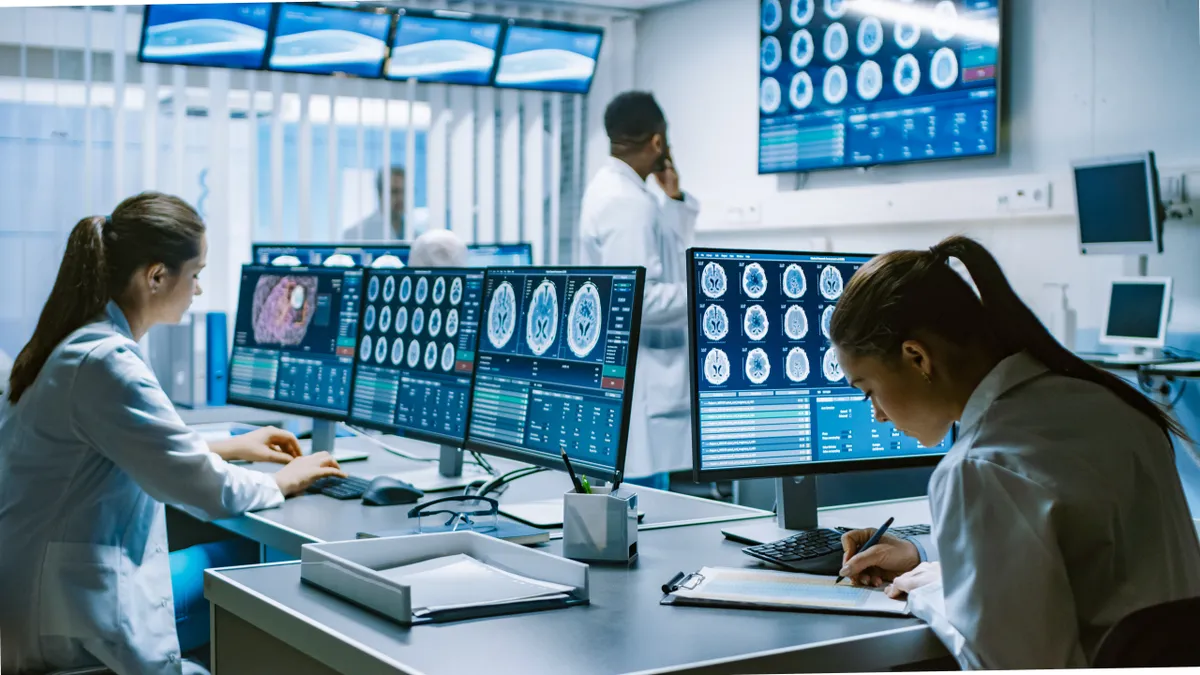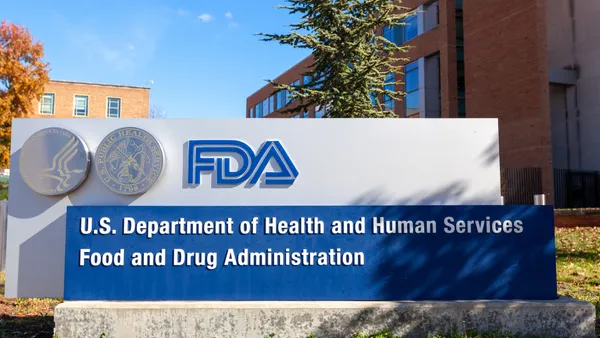Healthcare professionals look back at what went right amidst the trials of 2020 and ahead to a new healthcare ecosystem. GE Healthcare spoke with some of the industry's top professionals from around the world. They share their perspectives on lessons learned in 2020: what worked, what didn't, and what must be prioritized today to thrive tomorrow.
Improve operational efficiency with real-time visibility
New technology must help clinicians diagnose earlier, better, and faster-using devices that are leveraging artificial intelligence (AI), so healthcare providers can achieve a more precise diagnosis.
Virtual assistants saw greater adoption during the pandemic. Accessible via voice or text, mobile smart device, or computer, these technologies enabled physicians to pull up health data, skipping the time-consuming process of looking through electronic medical records.
Command center solutions that orchestrate real-time healthcare
With more patients, fewer open beds, and workflow chokepoints, hospitals and health systems turned to single a data infrastructure software known as "command centers," featuring real-time decision support tools. Hospitals are seeing unprecedented orchestration of patient care activity in real-time, using apps or "tiles" on a central dashboard. Enabled by AI—including machine learning, natural language processing (NLP), computer vision, and other modes—tiles are built for specialized use cases related to patient flow, quality, risk management, and system optimization.
Agile, portable solutions for quick diagnoses
In the past year, virtual, mobile, and agile diagnostic aids emerged as key clinical tools in hospitals facing COVID-19 surges. Healthcare leaders saw firsthand how mobile and handheld technologies, including diagnostics, empower clinicians to access data and perform tasks with ease, in a variety of settings.
Improve diagnostics and safety by thinking outside the box
Another proven success was a mobile, ready-to-use solution for performing CT scans in emergency situations, a lifesaver during the pandemic. The CT-in-a-box provided a scan room size to rival most departmental scanners and allowed users to maintain scanning, independent from their main radiology departments.
On-device AI for data where, when, and how clinicians need it
Today, there are many powerful AI algorithms embedded into medical devices, such as magnetic resonance (MR), CT, X-ray, ultrasound and more, along with applications that can reduce bureaucratic tasks like paperwork, charting, and patient data capture and help make clinicians' daily work more manageable.
Leverage Technology to Reduce Burnout
When technology works for clinicians by surfacing actionable data on command, healthcare has a stronger chance to hold on to the people who keep the system running smoothly. Technology for MR and CT is leveraging AI to make imaging faster for both technicians and patients.
Expand the Care Ecosystem with Virtual Care and Telemedicine
Remote monitoring solutions are fast emerging as a reliable and cost-effective technology to connect ICUs using a hub and spoke model. There are two types of remote monitoring, one connects remote hospitals to those in metropolitan city centers, and the other allows monitoring of ICU beds across the floors of a hospital building at a single location. It enables clinicians advanced consultation, care, and monitoring of their critically ill patients without having to physically transfer them to a super- specialty hospital. This reduces risk of clinical deterioration.
Improve Data Management to Strengthen Clinical Decisions
The effective use of data requires changing the way it is stored and used today. Experts say healthcare leaders must revamp the protocols and technologies that silo data and prevent information from informing action. Data integration strengthens clinical decision-making and patient outcomes by providing insights to healthcare professionals when they need it.
One solution is the implementation of cloud-based systems that can effectively and safely manage the exchange of relevant, real-time data to clinicians across the hospital enterprise, while anonymizing patient data when required. Such systems are being deployed to streamline data gathering, and boost patient privacy and data security.
Global cloud platforms are providing the core cloud infrastructure on which healthcare services can be built. They provide limitless storage, and computational and database capabilities that allows healthcare technology partners, consulting partners, and customers to build services and solutions to service patients.
Health systems can't do this alone; they must partner with industry experts who can act as the integrator of these data sets, helping providers take advantage of data in new and significant ways, helping to make precision health a reality that delivers, capacity, productivity, and patient outcomes.
The COVID-19 pandemic brought many trials and tribulations to an already overburdened sphere. But it also brought opportunity for those leaders who were able to modernize and improve their healthcare ecosystems, accelerating transformations in the making and offering a glimpse into the future of healthcare.









